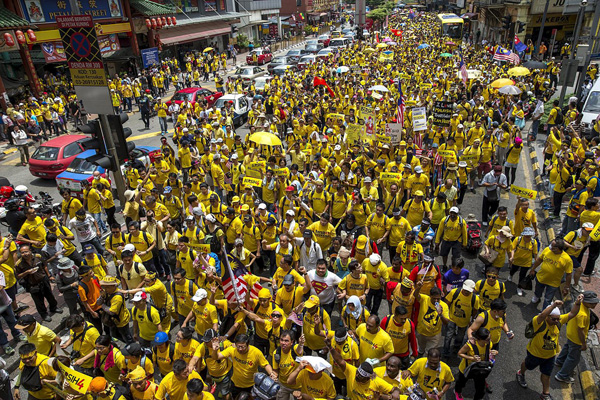Editor’s note from Ryan Goodman: Just Security is publishing a mini-forum on a significant document being drafted by the United Nations Human Rights Committee concerning the right of peaceful assembly. We are honored to launch the series with this article by Christof Heyns, member of the Committee and its rapporteur on the draft General Comment. As Heyns notes in his article, the Committee is currently accepting public views on the draft document, and we hope this series at Just Security will contribute to the important work of the Committee.
While public demonstrations have been an established part of political life in many parts of the world since at least the early 1900’s, they have more recently become a truly global phenomenon. The year 2019 has been marked by protest actions across the globe.
A number of causes have brought about the increased resort to demonstrations, the most obvious one probably being the increasing ease of communications. This ensures, on the one hand, that people around the world are exposed in real time to the struggles – and often the victories – of protestors in other parts of the world, and at the same time it facilitates the easy mobilization of popular participation in local protest actions. Human rights have also fostered a global sense of individual freedom as something worth taking a stand for.
What’s more, a growing body of research shows that – contrary to intuition – there has been a steady decline of violence in the world, measured by the percentage of the global population of people who die violently. A stronger emphasis on less-violent confrontations, for example in the form of peaceful assemblies, thus appears to be part of a long-term global trend away from violence.
Whatever the causes, the proliferation of peaceful – and sometimes not so peaceful – assemblies worldwide requires guidance from international law, and from the United Nations. To what extent can a global consensus be found about the basic “rules of engagement” for assemblies, giving clarity on the expected roles of participants and the authorities, and in some instances preventing an escalation into violent conflict? And where violence occurs, how can it be mitigated?
While some international standards on the conduct and management of assemblies have emerged, the scale and scope of contemporary public demonstrations require a fundamental reconsideration of the extent to which these standards adequately deal with the current situation. The emergence of modern technology in particular presents questions that have not emerged before. For example, what are the limits of using surveillance technology in tracking protestors; are online gatherings (virtual assemblies) protected; and what are the constraints on the multiple less-lethal weapons that states now have at their disposal? Moreover, given the privatization of public space, to what extent can demonstrations take place on privately owned property?
The United Nations has in the recent past engaged in several initiatives to address these matters. The appointment of a UN Special Rapporteur on the rights to freedom of peaceful assembly and of association some ten years ago has created an important platform for ongoing engagement with this issue. The Special Rapporteur on extrajudicial, summary or arbitrary executions has likewise also engaged with the issue of the use of force in such situations. On the regional level, the African Commission on Human and Peoples’ Rights, the Organization for Security and Cooperation in Europe, and the Inter-American Commission on Human Rights are among those that have developed norms on the management of assemblies and the use of force.
Initiating this Series at Just Security is aimed at eliciting broader engagement with two further, recent processes within the United Nations aimed at norm-setting in this field.
The first is the launch of the United Nations Human Rights Guidance on Less-Lethal Weapons in Law Enforcement in October 2019. The Guidance, published by the UN Office of the High Commissioner for Human Rights, is the result of an expert process over the past couple of years. It sets out the legal standards applicable to less lethal weapons and related equipment, during demonstrations but also in the course of other law enforcement activities such as arrest. While it offers a broad (re)statement of the applicable general principles of international law, and some good practices, with the imprimatur of the UN, the Guidance is by no means intended to be the last word on the topic, and has to be given life as part of an iterative global process.
The second norm-setting exercise is still half-way through the process: In November 2019 the UN Human Rights Committee released for public comment, in draft form, General Comment 37 on the right of peaceful assembly. The Human Rights Committee has encouraged public engagement with the document, which can be submitted (to
The Series hopes to illicit reactions and inputs into how to manage a central feature of modern society, namely peaceful assemblies, in a way that gives due recognition to the legitimate interests of the participants, the authorities, and the society at large.
Christof Heyns, University of Pretoria. Heyns is currently a member of the UN Human Rights Committee and is responsible for drafting their General Comment 37 on the right of peaceful assembly. As UN Special Rapporteur on extrajudicial, summary or arbitrary executions, he convened the expert group that has now completed the UN Human Rights Guidance on Less-Lethal Weapons in Law Enforcement, in collaboration with the UN Office of the High Commissioner for Human Rights.
[module-650]

